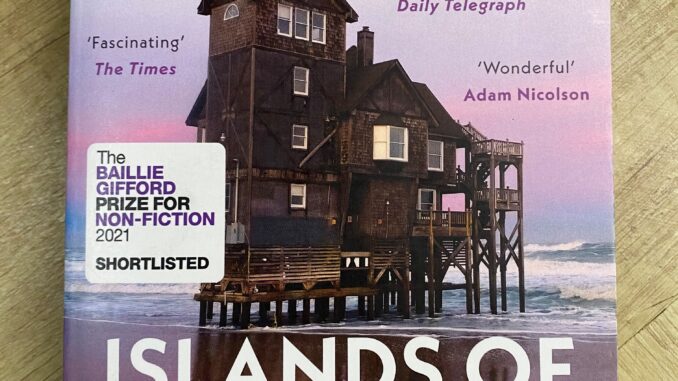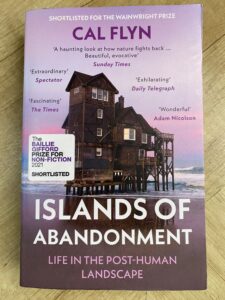

Life in the Post-Human Landscape
What happens when a landscape is abandoned by humans?
This is the question posed in this by turns haunting, provocative yet strangely hopeful book exploring a number of locations around the world which have experienced profound natural or human-made trauma. It also challenges our preconceived ideas of the type of landscape deserving of protection.
The books starts on the island of Inchkeith, close to Edinburgh, then moves a short distance to the Bings (from the Old Norse word bingr meaning a heap, tip or bin) – five enormous man-made spoil heaps of spent shale. The last shale mine here closed in 1962, and yet by 2004, an ecological survey found over 350 species of plants and flowers and a rich variety of animals from hawkmoths to hares. In a few decades, what was a symbol of industry and pollution had become a haven for wildlife.
Flyn goes on to describe her visits to a variety of places rendered uninhabitable by conflict, pollution or natural events, including the buffer zone in Cyprus which has been closed to humans since the Turkish invasion in 1975, and the area around Chernobyl – abandoned since one of the nuclear power station’s reactors exploded in 1986. In both these man-made no-man’s lands, wildlife has returned in abundance, with many previously rare species thriving. In the waters around Cony Island near New York, there are incredibly high levels of toxic polychlorinated biphenyls (PCBs) – manufactured in vast quantities for coolants, lubricants, electrical insulation and hydraulic fluids until their detrimental impact to human health resulted in their production being outlawed globally by 2001. Even worse, the breakdown product of PCBs is dioxin – a substance which is 170,000 times more poisonous than cyanide. In spite of these appalling levels of pollution, scientists have discovered that certain creatures have managed to adapt here in order to survive. A single blue-clawed crab living in this area has been found to contain enough dioxin in its body to give a person cancer. The killifish, a small type of fish which feeds off worms and mosquito larvae on the sea bed has evolved an adaptation to become tolerant to high levels of pollutants.
A particular strength of the book is the description of wondrous examples of the resilience and adaptability of species to survive in hostile and changing environmental conditions.
At the scene of the Battle of Verdun – a strange, pockmarked landscape in France, there is one place where after the First World War, over 200,000 shells containing nerve gases were piled into trenches and set on fire (known as La Place au Gaz). The resulting pollution resulted in such lethally high levels of arsenic being left in the topsoil that not even black pine trees would grow. However, the plant known as nodding thread moss (latin name Pohlia nutans) has thrived there and has been found to accumulate arsenic within its limbs. Interest in plants which act as “hyper-accumulators” of poisonous substances such as arsenic or heavy metals has grown amongst the scientific community as a way of managing pollution.
The single most extraordinary example of the power of Nature to recover from ecological trauma that Flynn describes is the rebuilding of pristine coral reefs around the Bikini Atoll island within 30 years after atomic weapons were tested there in the 1950s and 60s.
There is a clear message that wildlife thrives when humankind is absent. Interestingly, evidence is presented that natural re-wilding is taking place at a much greater rate than we might think – largely because huge tracts of land around the world are being abandoned as more people flock to cities for work.
On reading this book, one is compelled to think about what action each of us can take to improve our relationship with this precious planet of ours. Thoroughly recommended.